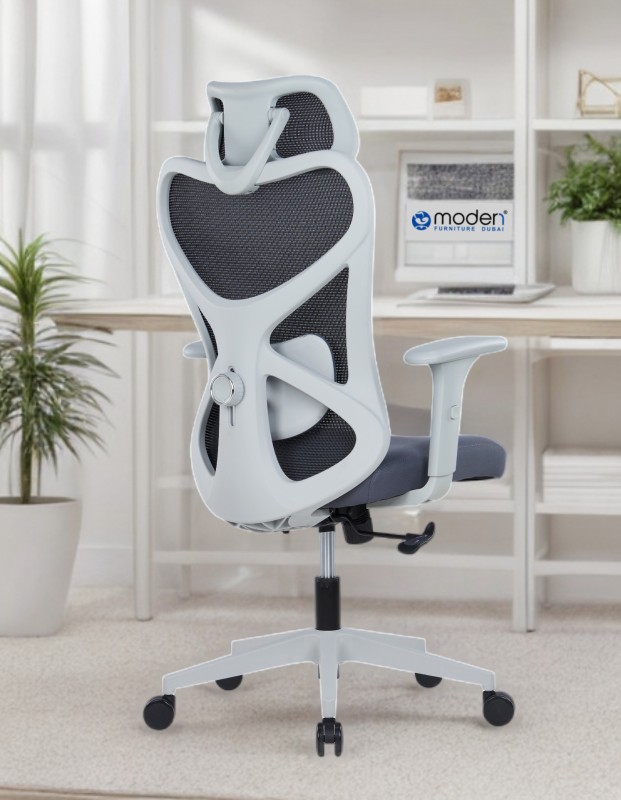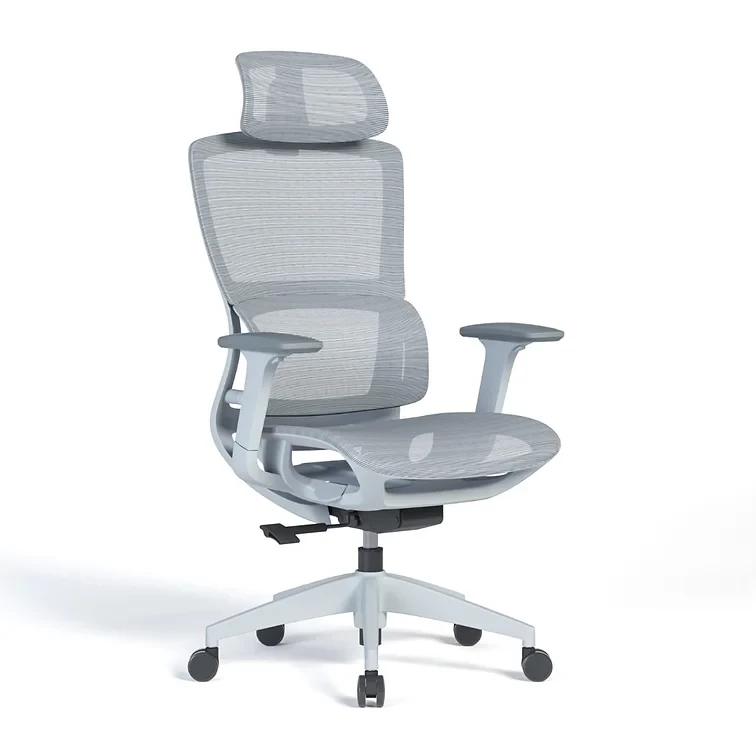
How to Adjust an Office Chair to Match Any Desk Type
Introduction:
Adjusting your office chair to match your desk is crucial for ensuring comfort and reducing strain, no matter what desk type you have. Whether you're working at a standing desk, a traditional workstation, or a home office desk, the right chair setup can significantly improve your posture and productivity. In this article, we'll guide you through adjusting your office chair for various desk types, along with ergonomic chair recommendations that offer customizable comfort.
1. Why Chair Adjustment Is Key for Comfort and Productivity
When your chair is correctly adjusted, it aligns your posture, reduces muscle strain, and boosts concentration. Sitting at the wrong height or angle can cause back pain, poor circulation, and even repetitive strain injuries. Here’s how to make sure your chair is optimized for every type of desk setup.
2. Understanding Chair Adjustments: Key Features to Focus On
Adjusting an office chair goes beyond just the seat height. Focus on:
-
Seat Height: Ensures your feet rest flat on the ground.
-
Seat Depth: Allows for sufficient thigh support without restricting circulation.
-
Backrest Angle & Tension: Provides lumbar support and encourages proper posture.
-
Armrest Height: Prevents shoulder strain by allowing your arms to rest naturally.
3. Adjusting Your Chair for a Standing Desk Setup
If you're working at a standing desk, your chair's height adjustment is critical. Ensure the chair is high enough to allow for a comfortable seated position but low enough for your feet to rest flat on the ground when needed. Look for chairs with adjustable seat height and tilt, like the Ucomfort Super Ergonomic Executive Office Chair, which provides customizable support for all desk types.
4. Adjusting for a Traditional Office Desk
For standard office desks, aim to have the chair’s height at a level where your arms are at a 90-degree angle when typing. This reduces strain on your wrists and shoulders. An ergonomic chair like the Chablo Executive High Back Ergonomic Office Chair is ideal for maintaining an upright posture and preventing slouching.
5. Best Chair Settings for a Home Office Desk
Home office setups can vary widely in size, so you might need a chair that offers a variety of adjustments to accommodate different desk types. Whether your desk is compact or spacious, having a chair with customizable features ensures that you get the most out of your home workspace.
6. How to Adjust Your Chair for a Compact Desk Setup
When working in tight spaces, it's essential to have a chair that adjusts both height and depth, ensuring it fits under the desk without compromising comfort. Look for ergonomic chairs that offer both lumbar support and a compact footprint, such as the Chablo Executive High Back Ergonomic Office Chair.
7. Desk-Specific Tips for Proper Chair Adjustment
Each desk type presents different challenges:
-
L-Shaped Desks: Ensure your chair's armrests don't interfere with the desk's edges.
-
Corner Desks: Adjust the seat depth so that your thighs are fully supported while maintaining proper posture.
-
Sit-Stand Desks: Frequently adjust the seat height throughout the day to maintain comfort.
8. How to Maintain Proper Posture with Your Chair and Desk
Maintaining proper posture is essential for avoiding discomfort and injuries. Adjust your chair to support the natural curve of your spine. Keep your knees at a 90-degree angle, and ensure your feet rest flat on the ground. Make adjustments throughout the day to avoid muscle fatigue.
9. The Role of Lumbar Support in Ergonomics
Lumbar support is crucial for maintaining a healthy lower back. Ensure your chair, such as the Ucomfort Super Ergonomic Executive Office Chair, provides proper lumbar support to avoid slouching and reduce back pain.
10. Additional Tips for Chair Maintenance and Adjustment
-
Regular Adjustments: Make adjustments periodically to avoid long-term strain.
-
Chair Upkeep: Keep the chair clean and well-maintained for smooth adjustments.
-
Posture Breaks: Take regular breaks to stand and stretch, even when your chair is perfectly adjusted.
Conclusion:
Proper chair adjustments are essential for comfort and productivity, regardless of your desk type. Whether you're using a standing desk, a traditional office desk, or a compact home office desk, ensure your chair fits your body and workspace needs. Ergonomic options like the Ucomfort Super Ergonomic Executive Chair and Chablo Executive High Back Ergonomic Office Chair can provide the support you need for long hours of work.
Recommended Products:

-
Ucomfort Super Ergonomic Executive Office Chair – High Back (White)
Ideal for various desk types, this chair offers exceptional ergonomic support with adjustable height, backrest, and lumbar support.
-
Chablo Executive High Back Ergonomic Office Chair – Grey
Designed for comfort and support, this chair features a high back and premium cushioning, perfect for long office hours.
FAQ:
Q1: How do I know if my chair is at the right height?
A1: Your feet should rest flat on the floor, with your knees at a 90-degree angle. If the seat is too high or low, adjust it until your thighs are parallel to the floor.Q2: Can I use a standing desk with a regular office chair?
A2: Yes, but ensure your chair is height-adjustable to accommodate the higher or lower seating position that a standing desk requires.


